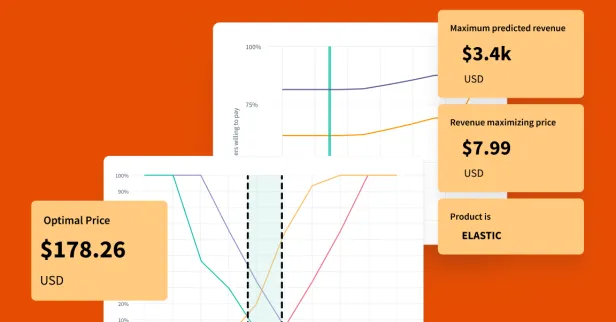If you want the highest quality data from your research, you'll need to give respondents a clear path through your survey.And that requires thoughtful and intelligent design.
By optimizing and shortening the overall survey experience, you can lessen the possibility of respondent fatigue. Which, in turn, helps to protect you against data degradation.
Aside from writing effective questions, you can use survey logic to streamline the respondent experience.
We’ve put together a guide to help you better understand how different types of survey logic work and how to apply them to your next project.
What is Survey Logic?
When you design a survey, you might find that not all of the questions you’ve developed apply to your entire respondent pool. Survey logic allows you to change the survey content based on respondents' answers. This can include skipping pages, looping sets of questions, and even setting quotas on the types of respondents you need.
Why is Survey Logic Important?
When used properly, survey logic shortens your survey and gives respondents a clear path free from erroneous questions. This, in turn, helps increase completion rates and reduce respondent fatigue (a large contributor to poor-quality data).
Types of Survey Logic
There are many different types of survey logic you can apply to your project’s design. Some of the most popular include:
Conditional Display
Conditional display logic works by hiding or displaying specific questions or answer options based on a respondent's previous answers. This allows you to better personalize the survey for your respondents by only showing the question and answer options that apply to them. For example, if you asked respondents whether they prefer coffee or tea, you could use conditional display logic to show appropriate follow-up questions based on the respondent's selection.
Multi-Question Logic
Similar to conditional display, multi-question logic allows you to route respondents to specific questions based on their responses to multiple questions. For example, if you only wanted respondents who made over $150k a year AND were the primary grocery shopper in their household, you could screen out anyone who did not provide those two answers.
Question Skip Logic
Skip logic allows you to route respondents around specific questions that do not apply to them. For example, if a respondent says they have never used one of the products you’ve asked about, you would want them to skip the following question about their satisfaction with that product.
Page Skip Logic
Just like the skip logic above, page skip allows you to route respondents around entire pages that do not apply to them. For example, if a respondent says they have never used one of the products in your survey, you would want them to skip the following page with follow-up questions about their experience with said product.
Question Looping Logic
Much like the name would imply, looping logic is used to ask respondents the same question, or set of questions, multiple times based on their previous responses. For example, if you had respondents choose the specific products they had recently bought, you may then want to “loop” them through a set of questions asking them for more information on each.
Question and Answer Piping Logic
Piping logic is used to “pipe”, or insert, a respondent's answer choice into a question later in the survey. For example, if your respondent had chosen “Nike”, “Adidas”, and “New Balance” as shoe brands they recently purchased, you would want to “pipe” those answer choices into the follow-up questions regarding their purchase experience with the shoes.
Disqualification Logic
Disqualification logic uses screening questions to disqualify respondents that do not meet the requirements of your quota. These respondents would not be counted towards your quota, and their answers would not be included in the data analysis. For example, if you only wanted feedback from respondents between the ages of 25-35 that lived in urban settings, you would use screening questions at the beginning of your survey to weed out those respondents who did not meet your qualifications. Those that do, count towards the overall response limit that you set.
Numeric Logic
Numeric logic is the ability to set logic based on numeric questions in relation to each other. For example, if a respondent gives an answer to Question 2 that is greater than their answer to Question 3, you could skip them to another area of your project.
End-of-Survey Logic
As the name would suggest, end-of-survey logic allows you to route a respondent to the end of a survey. However, this is different from disqualification logic, as the respondent's answers will be included and they will be counted towards your total.
(BONUS) Quotas
Only because we mentioned them above, survey quotes represent the number of respondents needed to meet your specific requirements- like the number of women or people in a specific age group. For example, if you want a sample representative of the general population of the United States, you would need your respondent gender breakdown to be: 49% female, 49% male, and 2% non-binary. To accomplish this, you would use the quotas system and specify those percentages.
(BONUS) Nested Quotas
Nested Quotas add another layer of complexity to your quotas by including a specific breakdown of percentiles not just across one variable ( like sex), but by nesting multiple variables like age groups, income, etc.
Surveys with SightX
The SightX platform is the next generation of market research tools: a single, unified solution for consumer engagement, understanding, advanced analysis, and reporting. It allows insights, marketing, and CX teams to start, optimize, and scale their insights workflow.
But, SightX isn’t just great tech. Our Research Services team knows all of the best practices, along with some tips and tricks for getting the best data out of your surveys.
Remove the guesswork from your current strategy by going directly to the source. Reach out to our team to get started today.
